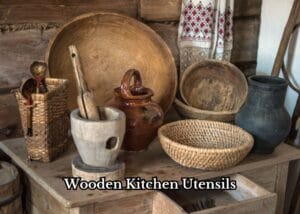Before cast iron, silver, and brass became common, people made everything, including kitchen utensils, from wood. From pitchers to bowls and spoons to mashers, everything was wood. And it wasn’t just plain wood but wood with all artistry!
Today, these antique wooden kitchen utensils are common in every household, yet most people overlook them, thinking they’re just wood! But that beat-up butter mold sitting unused at the top of the shelf could be worth $500!
To make sure you don’t miss out, I curated this list of some valuable antique wooden kitchen utensils that’ll also explain how to know whether your piece is valuable or not!
1. Hand-Carved Butter Mold Stamps
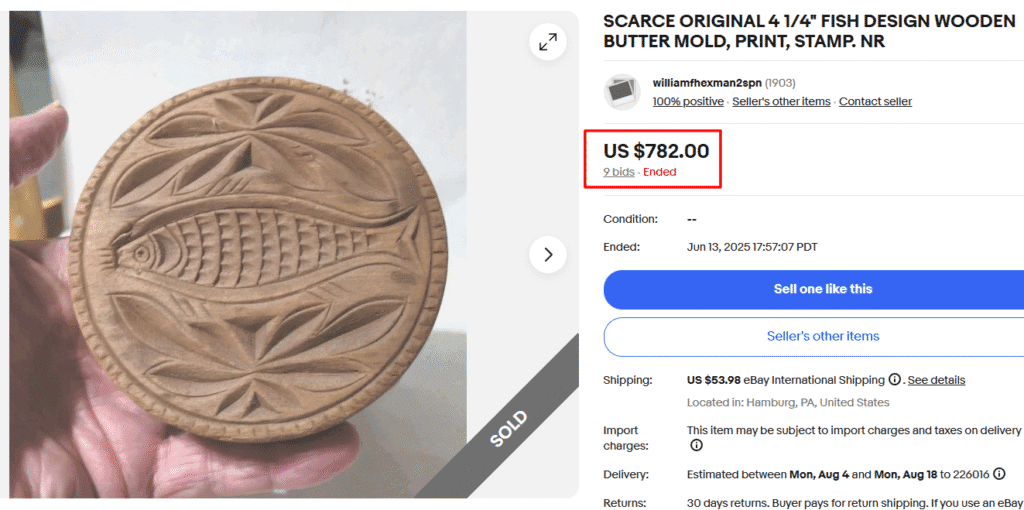
Before butter came wrapped in foil, it was sold in blocks and often decorated with carved stamps. These molds and stamps were made of wood from Tudor times through the early 1900s.
What makes antique wooden butter stamps special is that each one had its own design respective to the farm it belonged to. You’ll find cows, wheat sheaves, flowers, even family names carved in reverse so they’d print correctly on the butter.
Value: Small molds and stamps can range anywhere from $25 to $500, depending on condition and design. The rarer and more complex the carving, the more the value.
2. Antique Wooden Spoons
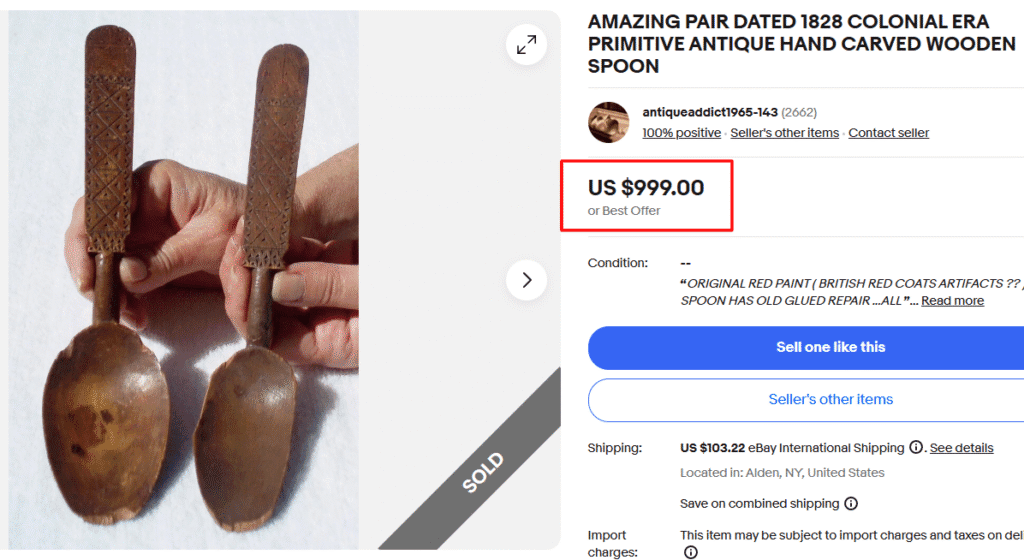
Wooden spoons and ladles are perhaps the most personal kitchen tools, often carved by a family member for a specific purpose. These are perfect examples of treenware!
The value of wooden spoons largely depends on the artistry of the carving, the type of wood, and, of course, the condition. Spoons with original hand-carving signs or tool marks are quite desirable!
Additional features like chip carving, Burl wood or figured Maple body, and unusual forms can make boring wooden spoons interesting and collectible!
Value: Simple, functional spoons can sell for $20 – $40, while those made of burl with chip-carved handles can fetch $200 – $500+!
3. Large Dough Kneading Bowls
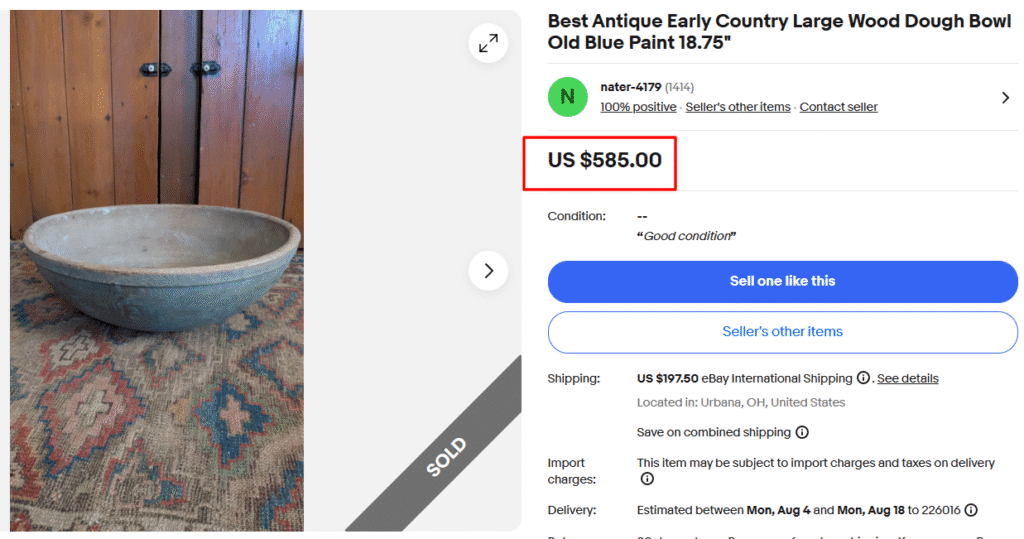
These large, shallow bowls were essential for kneading bread. Their massive size (15 to 36 inches across) and rich history make them not just collectibles but stunning centerpieces for a vintage farmhouse decor kitchen today.
These bowls weren’t all the same; you’ll see regional differences. For example, New England bowls are likely clean and simple, while Southern bowls show more repair work, making them more unique.
But the value largely depends on the size, scoop marks from the adze or gouge used to hollow it out, and its condition (no major cracks or chips)
Value: Smaller (10-15 inch) bowls generally go for $100 – $200, while 18-25 inch bowls with good character can reach $300 – $600. Exceptionally large (over 30 inches) and uniquely shaped bowls can even cross $1,000!
4. Wooden Rolling Pins
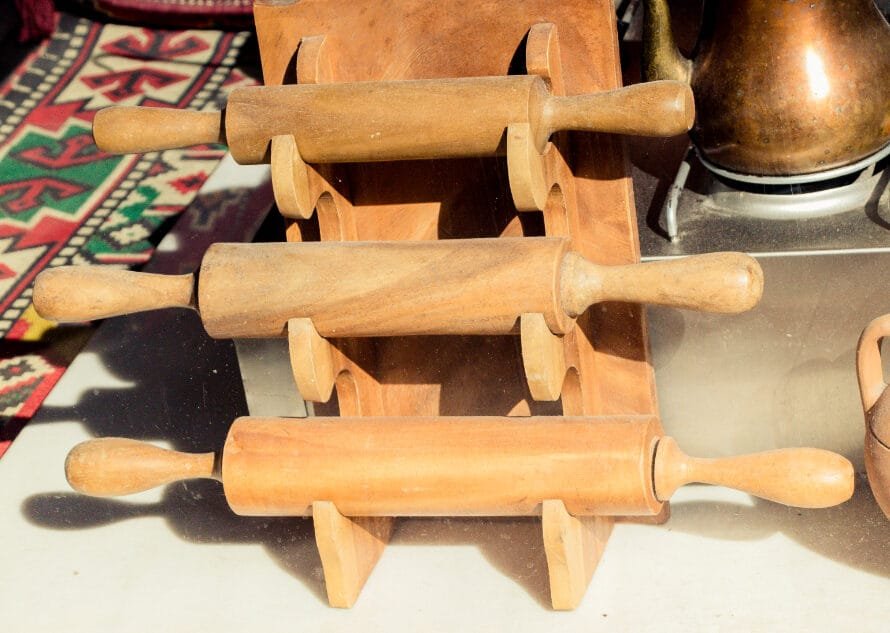
Wooden rolling pins were a staple in every vintage kitchen. And while these wooden utensils might look worthless, certain features can actually make them worth a hundred dollars or more!
For example, the specific types of wood used are the key characteristic. Maple is common, but pins made of birdseye maple, cherry, or walnut are valuable. There were also glass pins with wooden handles, used for keeping dough cool.
Value: Common pins are worth $20 – $45, with unusually shaped pins reaching $50 – $125! Decorative carving, advertising, or premium wood can fetch $150+!
5. Primitive Wooden Mashers
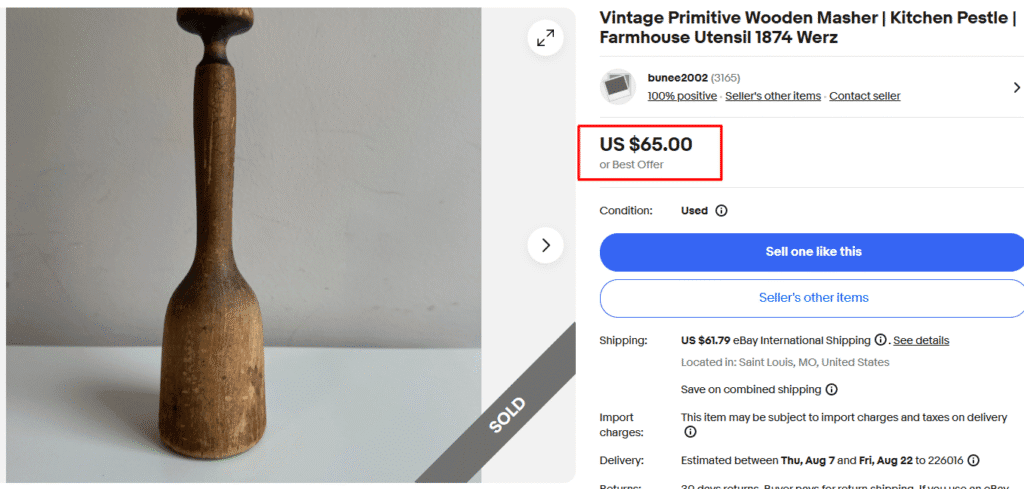
Used for mashing stuff – potatoes, boiled veggies, etc., a simple wooden masher might look basic at first glance! However, if it’s carved from a single piece of hardwood, it can be worth a small fortune!
Look for hand-carved construction from one piece of wood. Machine-made mashers from the mid-1900s onward with different handles and heads are common.
Value: Common, plain mashers go for $15-50, while those with ornate carvings can hit $100-200!
6. Pitchers
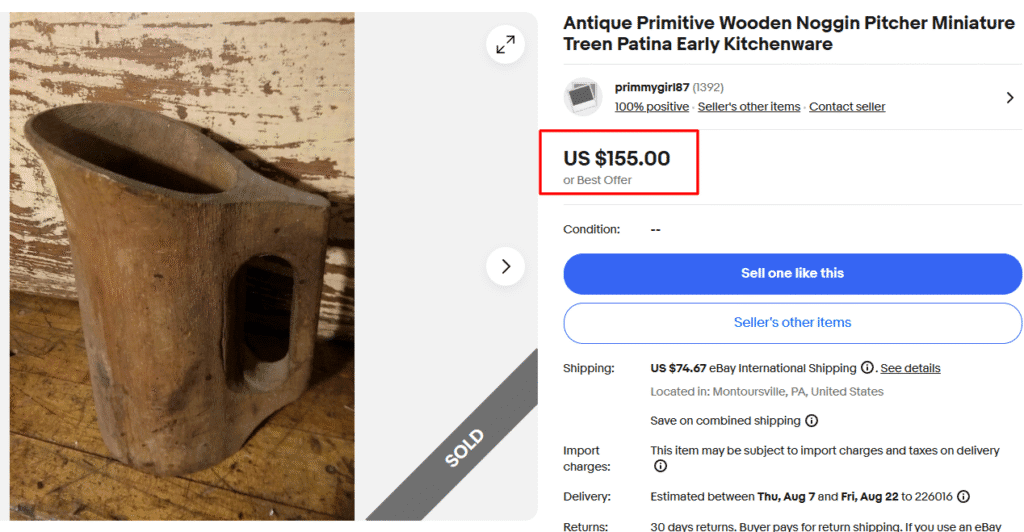
While less common than ceramic or metal pitchers, wooden pitchers were used for serving everything from water to ale. Their rarity and often intricate construction make them collectible kitchen utensils today!.
To spot authentic antique pitchers, look for evidence of liquid use (water stains, wear patterns, etc.). Also, look for sophisticated handle attachment methods. Folk art decorations, like painted flowers (rosemaling) or carved animals and original carved lids, can add to the value.
Value: Simple, unadorned pitchers are typically worth $75 – $150, while those with some carving are worth $200 – $400. Highly decorated, painted, or dated Scandinavian pieces can touch $500 – $1,000+!
7. Carved Nutcrackers
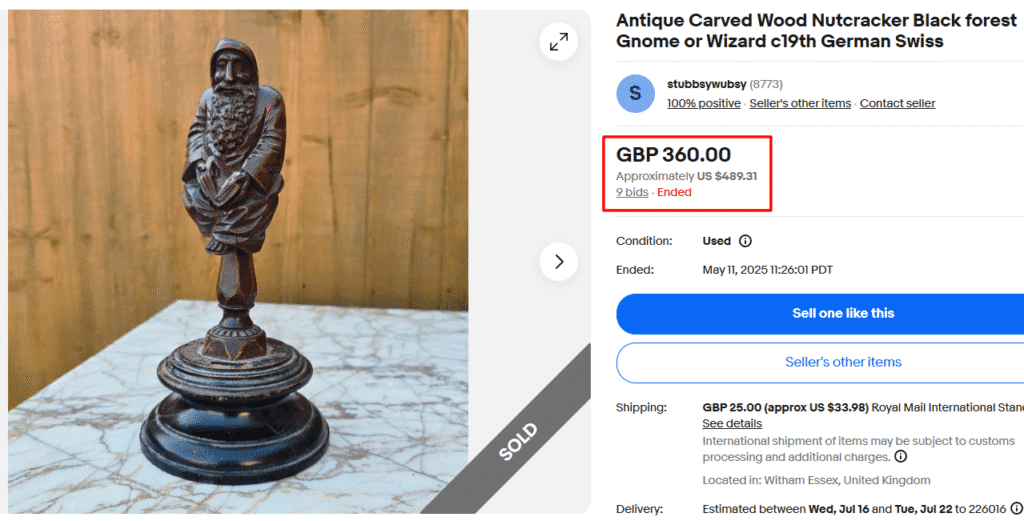
Antique wooden nutcrackers weren’t just tools or utensils; they were works of art! Figural nutcrackers, especially those from the Black Forest region of Germany, are highly sought after for their extraordinary, detailed carving you don’t see in modern metal levers!
You’ll generally find people, animals (squirrels, dogs, birds), and gnomes. The more detailed and expressive the figurine, the better! Also, early examples have simple, robust wooden or metal pin hinges.
Value: Simple, non-figural wooden nutcrackers are worth the least; $20 – $50. Well-carved figural examples can fetch $100 – $300, while large and highly detailed Black Forest pieces have sold for $400 – $800+!
8. Wooden Bread Boxes
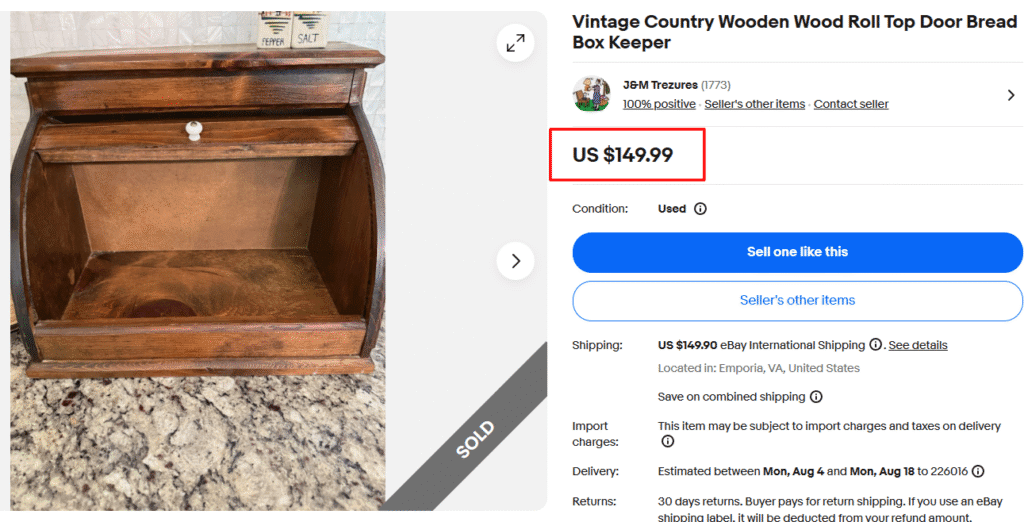
A wooden countertop bread box used for storing bread is a nostalgic and highly functional collectible, especially those with the iconic roll-top doors. The most valuable pieces generally have an Oak body, especially quarter-sawn oak with that beautiful “tiger” grain.
You can spot authentic boxes by dovetail joints, and decals, like an “American Eagle” decal or the word “BREAD” in original paint or stencil.
Value: Simple and plain oak bread boxes in good condition can fetch anywhere between $50 – $150. Quarter-sawn oak or boxes with original decals can reach $350.
9. Antique Flour Sifters
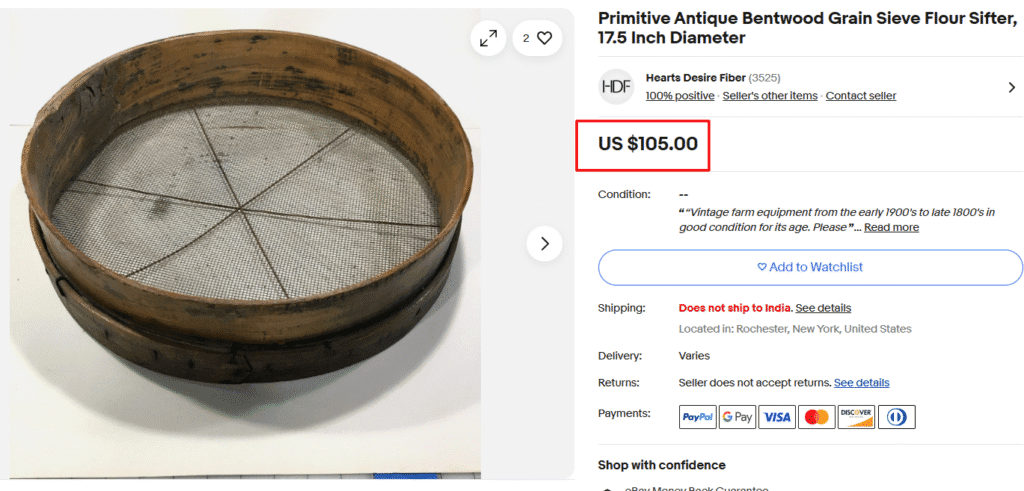
While many antique sifters are tin, earlier and more charming versions used wood frames with a metal mesh. You can spot the earliest authentic pieces by a simple construction with hand-bent wooden hoops and period-appropriate mesh (horsehair or early wire screening).
Also, sifters from a particular flour mill or general store with a distinctive stenciled marking are worth more.
Value: Common tin sifters with wooden handles: $15 – $30 and those with wooden barrels and clear advertising or marking can reach up to $50 – $150.
10. Primitive Mortar and Pestles
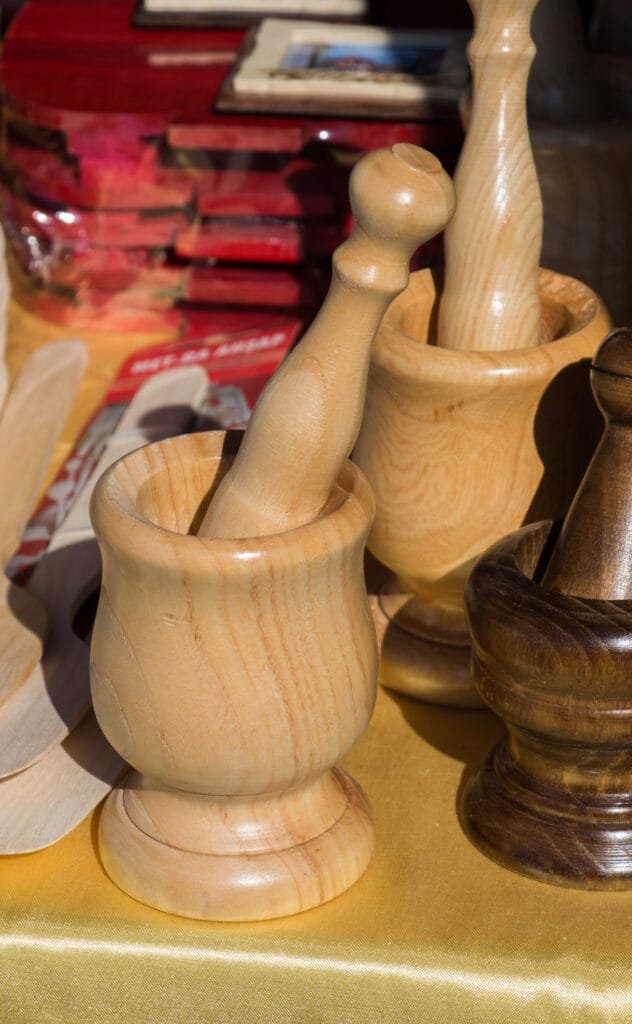
These are the granddaddies of kitchen utensils, as people have been grinding grain, spices, herbs, and medicines in wooden mortars for thousands of years. But most mortars and pestles got separated over the years, so finding a matching set means a lot!
For these, the type of wood is crucial to the value! For instance, Lignum Vitae wood is the most sought-after material, known for its distinctive greenish-brown hue and dense, heavy, self-lubricating wood.
Also, larger, more sculptural examples, perhaps with carved rings or a pedestal base, are more valuable.
Value: Small mortar & pestle sets of common wood (maple, oak) range from $50 to $100, while large sets can go up to $150 – $300. Lignum Vitae or large burl sets can be worth $400 – $800+!
11. Welsh Hand-Carved Wedding Love Spoon
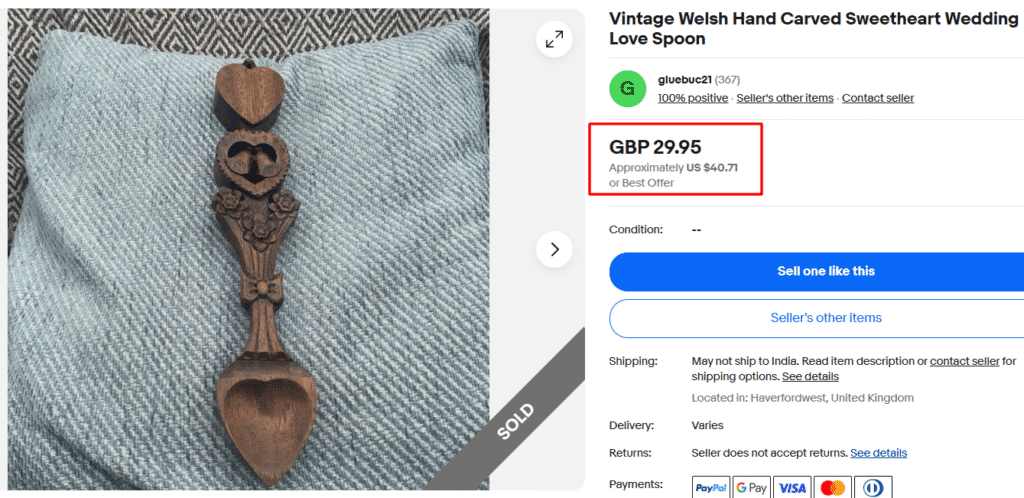
Though not strictly a kitchen utensil for use, these often appeared in kitchens back in the day. They’re a true example of folk art in Wales. More than utensils, these spoons are tokens of affection, carved by a suitor for his beloved (mostly like a wedding gift).
True antique love spoons are often made from one piece of sycamore, boxwood, or fruitwood, featuring complex designs with symbols like hearts, keys/keyholes, chains, balls in a cage, etc.
Value: Simple, 20th-century tourist examples range from $25 – $50, while well-carved spoons from the early 1900s can fetch $150 – $400+!
12. Pastry & Dough Cutters
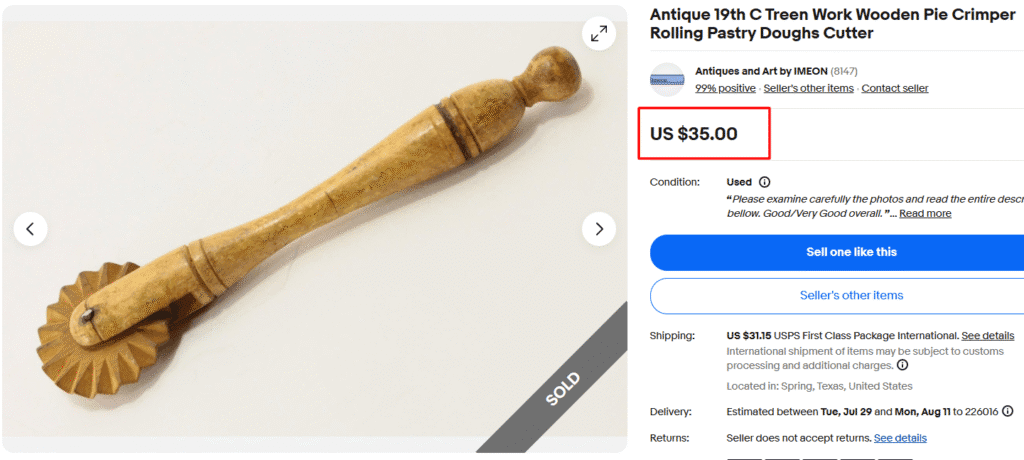
The super smooth metal pie and pastry cutters you see today, the earlier versions of those were entirely made of wood, even the wheel! Also, there were different cutters for different pastries, each designed for a specific edge shape.
For these tools, collectors generally focus on wheel-type cutters with wooden handles and regional design variations. Intricate chip-carved or figural-shaped handles are a plus! Also, examples with wheels made of bone, ivory, or even whalebone (scrimshaw) are rare!
Value: Plain antique wooden cutters fetch $15 – $30, and those with well-carved handles can go for $100 – $250. Rare pieces with ivory/bone wheels can be more!
13. Lemon Squeezers
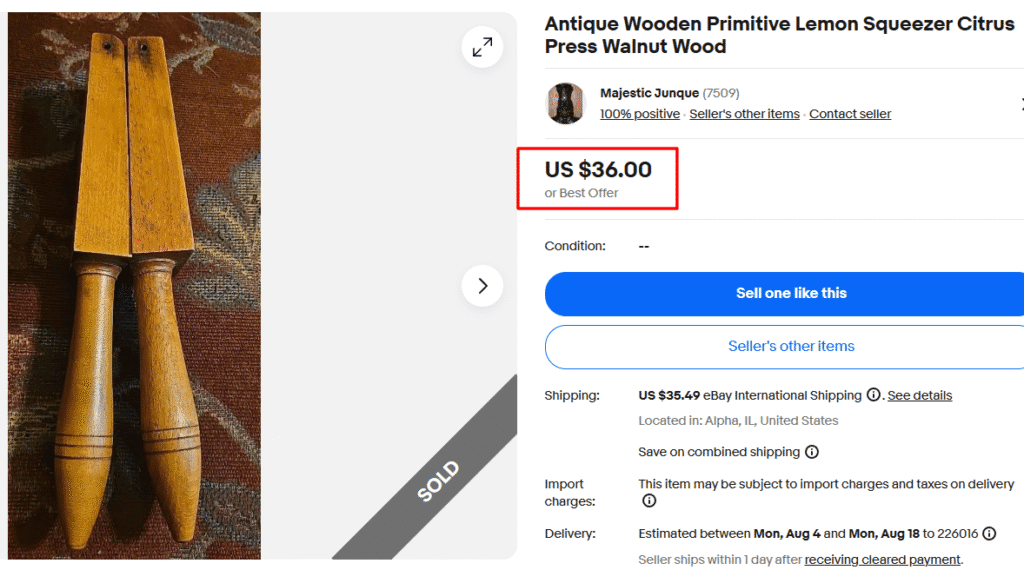
Wooden lemon squeezers are a staple of the Victorian era; they were a must for everything from lemonade to cocktails. What makes these simple tools collectible is the robust, mechanical nature combined with quality hardwoods!
Out of all, if you see a Lignum Vitae or Mahogany squeezer, you have something real! Also, some of the most desirable are the “chamber” or “barrel” type that encloses the entire lemon half.
To spot the authentic pieces, look for evidence of citrus use on the inside.
Value: Depending on the functionality and condition, common maple or beech squeezers can fetch $25 – $50, while Mahogany or Lignum Vitae pieces range $75 – $200!
Note: This article is intended for informational, educational, and entertainment purposes only. Some images are illustrative and may not represent actual brands, products, or related entities. All trademarks, product names, brand logos, packaging, and other intellectual property referenced remain the exclusive property of their respective owners. Any brand mentions or references are provided solely for descriptive and educational context and do not imply any formal or commercial association.

